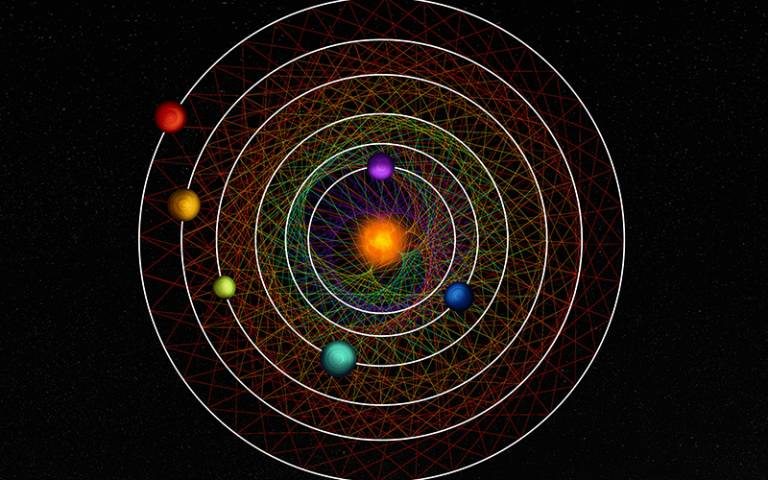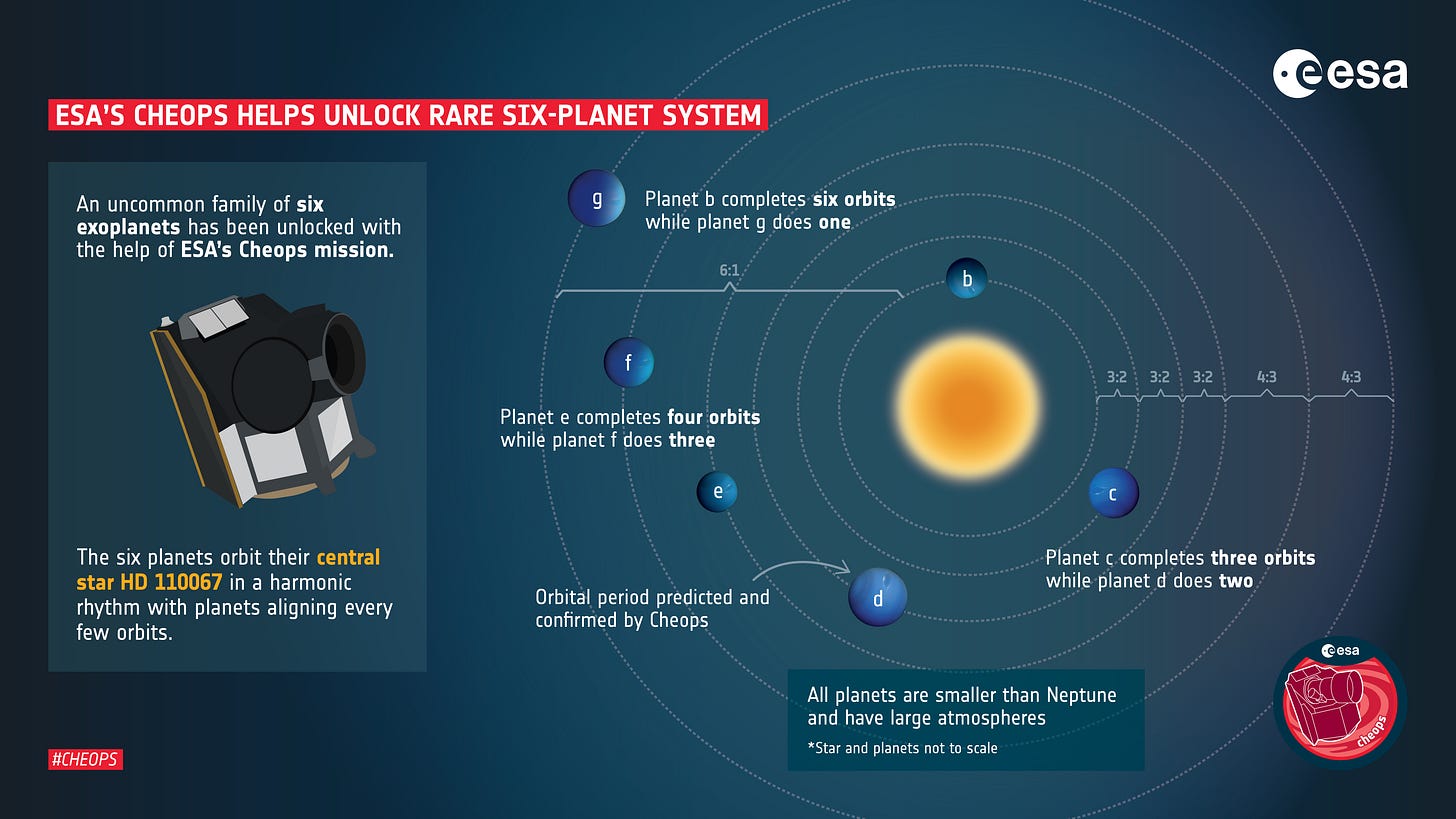A Nature paper released today details the discovery of a six-planet system orbiting a nearby, bright star. The research was led by Dr Rafael Luque of the University of Chicago, and includes authors from the Extrasolar Times.
The star HD110067 was observed with NASA’s Transiting Exoplanet Survey Satellite (TESS) in 2020. TESS detected several potential transit events which indicated that planets were passing in front of the star’s surface. The initial analysis revealed two planet candidates and two years later, TESS observed the same star again. By combining these observations they were able to find two candidate planets in the system (though at different orbital periods than originally thought). But there was still a lot that didn’t make sense.
“That’s when we decided to use Cheops. We went fishing for signals among all the potential periods that those planets could have,” says Luque.

By using targeted Cheops (ESA’s CHaracterising ExOPlanet Satellite) observations they confirmed a third planet in the system and realised that they had found the key to unlocking the whole system: it was now clear that the three planets were in an orbital resonance. The outer-most planet takes 20.519 days to orbit, which is extremely close to 1.5 times the orbital period of the next planet with 13.673 days. This in turn is almost exactly 1.5 times the orbital period of the inner planet, with 9.114 days.
However, there were still some potential transit signals in the TESS data which were unaccounted for, namely a further 3 possible candidates. By analysing the period ratio of the planets already found, it was possible to predict the orbital periods of these three potential planets. Incredibly, when the team searched for these three hidden planets they actually found them, at exactly the orbital periods that were predicted.

Resonant systems are unique opportunities to study how multi-planet systems form and evolve. Planets seem to often form in resonance but can be easily disrupted during their lifetime. This means that for HD110067 to still be resonant it must be pretty much unchanged from its initial formation. By studying this system, astronomers get a rare glimpse into the past.
“We think only about one percent of all systems stay in resonance,” says Rafael. That’s why HD110067 is special and invites further study. “It shows us the pristine configuration of a planetary system that has survived untouched.”
HD110067 is the brightest known system with four or more planets, meaning it is amenable to further study with different observation techniques - including with ground-based telescopes. Since the planets are all likely to have extended atmospheres (based on their bulk density), it makes them ideal candidates for studying the composition of their atmospheres using the NASA/ESA/CSA James Webb Space Telescope and the ESA’s future Ariel and Plato telescopes.
Below: to-scale animation of the orbits of the six resonant planets in the HD110067 system. The pitch of the notes played when each planet transits matches the resonant change in orbital frequencies between each subsequent planet. Annotations describe the discovery process of each planet in turn. The background image is the TESS field centred on HD 110067 from which the first hints of exoplanets orbiting the star were first seen (Credit: NASA/MIT/TESS and Ethan Kruse). The relative sizes of the planets (as shown by the key to the left) is accurate, although their true size compared to the star is much smaller.
Video Credit: Animation, composition and annotations by Dr. Hugh Osborn (University of Bern).
The study by Luque et al. includes Vincent Van Eylen and Hannah Osborne. Van Eylen is the editor of the Extrasolar Times and Osborne is a member of his research team and writer for the Extrasolar Times. The study was also featured in the UCL news.



